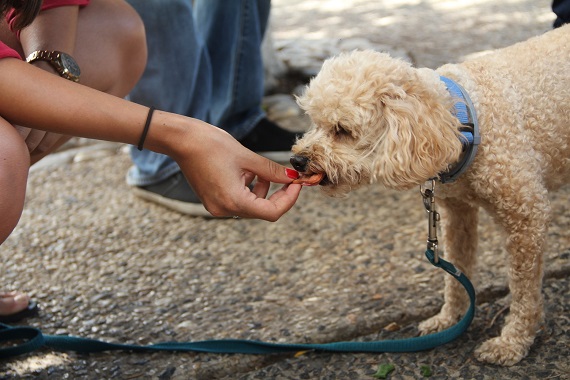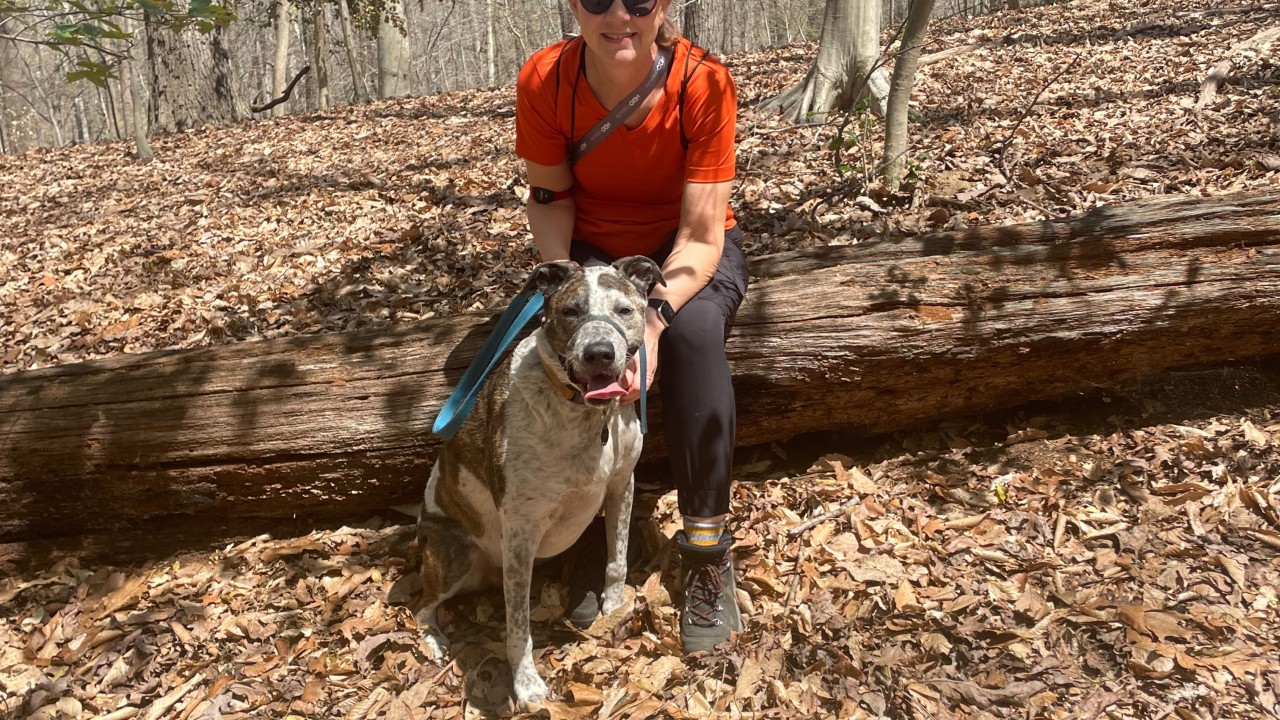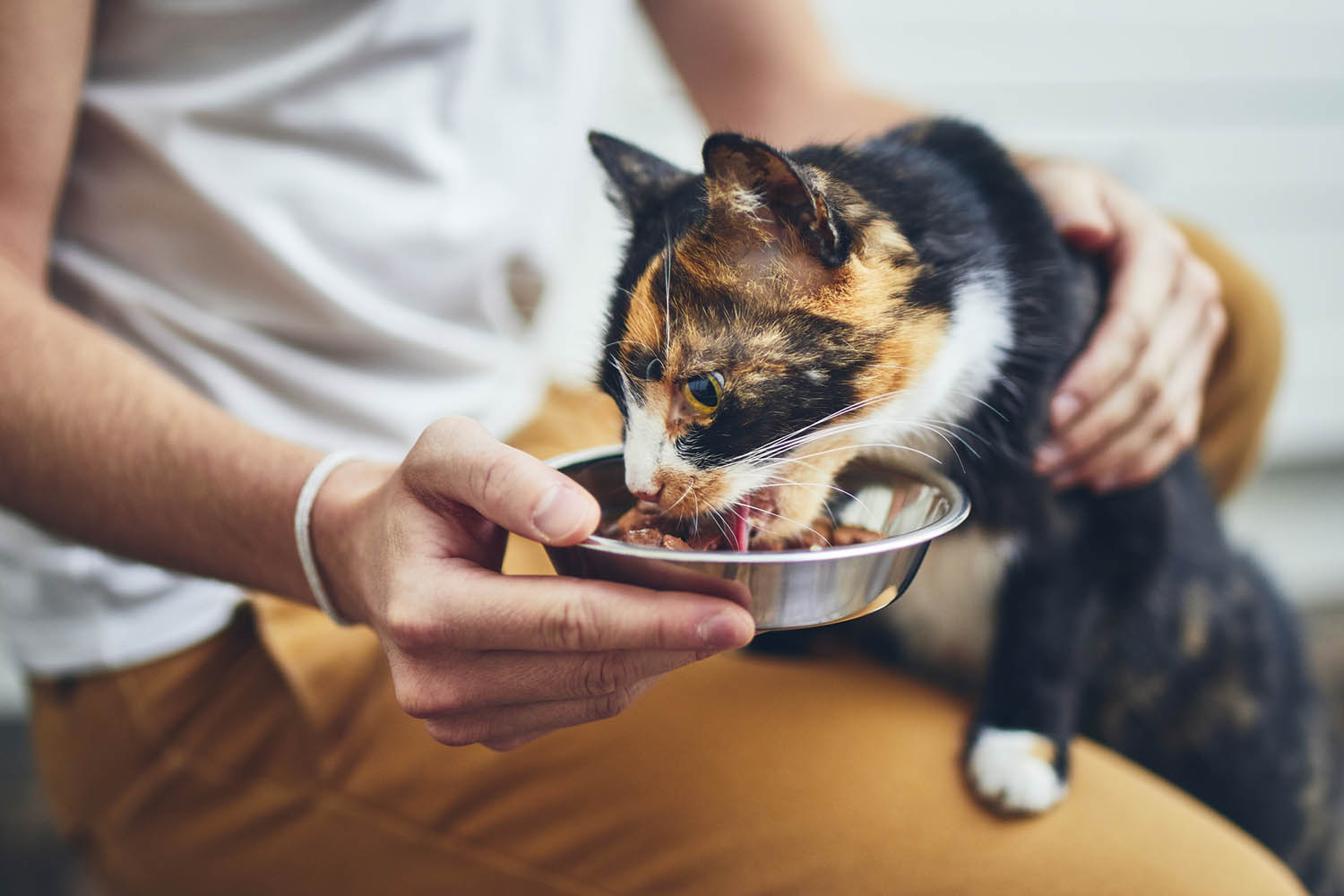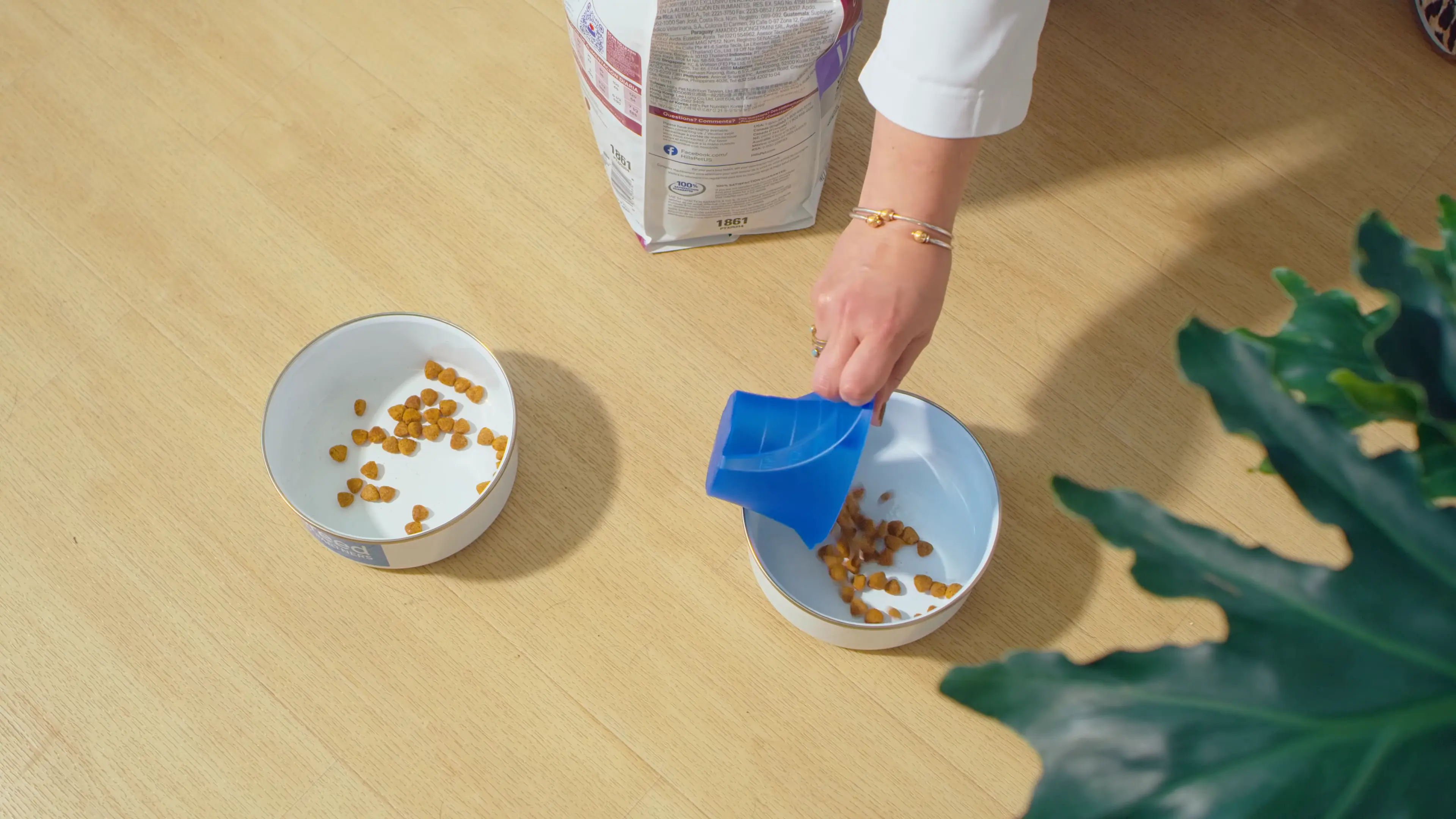As pet lovers, we look for ways to help promote our dog or cat’s quality of life. One important step toward long-term health and well-being is ensuring your pet is at a healthy weight. In this post, we help explain what a healthy weight may look like and break down some ways to help achieve or maintain an ideal body condition for your dog or cat.
What a Healthy Body Weight Looks Like for Pets
There is no “one-size-fits-all” healthy weight for pets, and, depending on a cat or dog’s breed, height and age, the recommendations for ideal weight will vary. However, pet lovers should still pay close attention to their pet’s body condition (also known as physique) and work with a veterinarian to identify potential weight problems early. To determine if your pet is at risk of becoming overweight or obese, try an at-home body condition check or learn how veterinarians perform the knuckle-test. While these tests can be done at home, a trusted veterinarian is still the best resource to help advise on whether a dog or cat is at a healthy weight.
As a general rule, pet owners should be able to feel a cat or dog’s ribs with minimal fat covering them. A pet’s waist should be easily determined when looking at him or her from above, and an upward slope of the stomach should be visible when observing pets from the side. A cat or dog’s stomach should never hang low to the ground.
Why a Healthy Weight Matters
Why is it important to keep your pet at a healthy body condition? Remember, maintaining a healthy weight can help improve your pet’s quality of life. When considering slipping your pet a human snack from the table, remember that an overweight or obese dog or cat may suffer from serious related health issues. In the United States, it is estimated that 56 percent of dogs and 60 percent of cats are overweight or obese. Some of the major health risks, which can cause your pet discomfort and decrease their quality of life, include:
- Diabetes
- Heart Disease
- Pancreatitis
- Kidney Disease
- Arthritis
- Cancer
The Role of Diet in Reaching a Healthy Weight
After identifying a potential weight problem, a veterinarian may recommend that a cat or dog switches temporarily to a weight-loss or weight management pet food to help achieve a healthier, more comfortable weight.
These pet foods will include specific variations to help your pet, such as increased fiber, protein, and other essential nutrients to help your dog or cat feel more satiated and fuller, reduce begging, and maintain muscle, while reducing caloric intake. These foods can help reduce caloric intake but still ensure your pet receives the right amounts of essential nutrients. It is important for pet lovers to consult with their veterinarian when determining a weight-loss plan before simply feeding less of the pet’s regular food, as this can deprive dogs or cats of important nutrients.
In addition, some pet food labels will feature that the product is lower in calories or fat. The Association of American Feed Control Officials (AAFCO) creates model pet food regulations and label guidelines that can be adopted by states. AAFCO’S label guidelines include specific language to help regulate claims for weight-loss or weight management pet foods. This includes language such as “light,” “low-calorie,” “low-fat,” “reduced calorie,” or “reduced fat.”
While diets labeled these ways may have lower energy in the form of calories or fat, they must still meet the minimum requires for pets at an ideal bodyweight and may not meet the needs of an aggressive weight loss plan.
How to Help Pets Achieve and Maintain a Healthy Weight
Maintaining a pet’s healthy weight requires a combination of proper nutrition, activity and preventive care. Some important steps include:
- Regular Veterinary Visits: Pets should see a veterinarian regularly for check-ups, at which time owners can ask about nutrition and discuss weight-loss and management plans, if necessary.
- Practice Portion Control: At home, it’s important for pet owners to practice portion control with cat and dogs and ensure that they are measuring out the recommended serving size for their pet. Everyone in the household is responsible for keeping pets safe and healthy and should accurately keep track of how much food a pet is getting each day to avoid overfeeding.
- Mindful Treating: Our video shares some simple feeding and treating tips to help keep your pet at a healthy weight. For example, avoid feeding pets table scraps that are high in fat and calories, and limit your pet’s treat consumption to up to 10 percent of their daily calories.
- Finding Fun Activities: Staying active will also help keep pets at a healthy weight. Whether it’s extra walks around the neighborhood, playing catch, and or using cat toys, fun activities can be a great form of exercise for pets. These can not only help increase the bond with our pets, but also help us stay more active, too.
For more tips on how to manage a pet’s weight and keep them happy and healthy, visit our Feeding and Treating Tips page.



